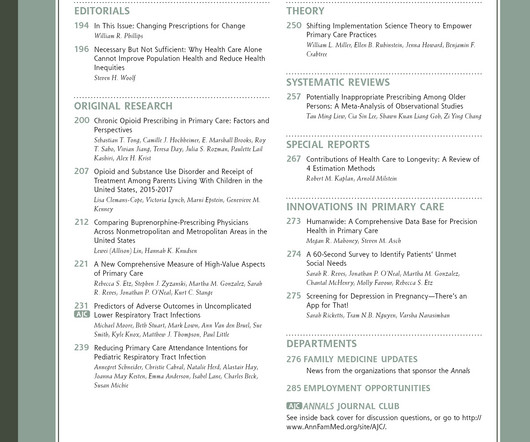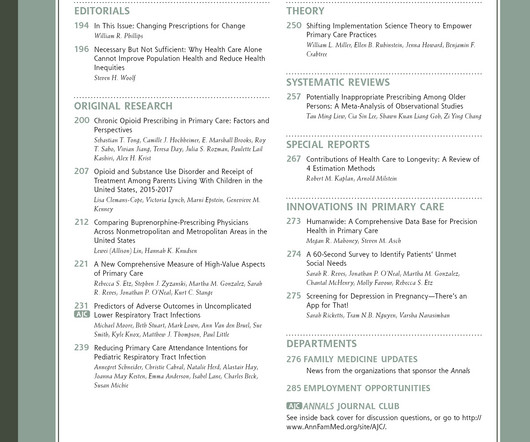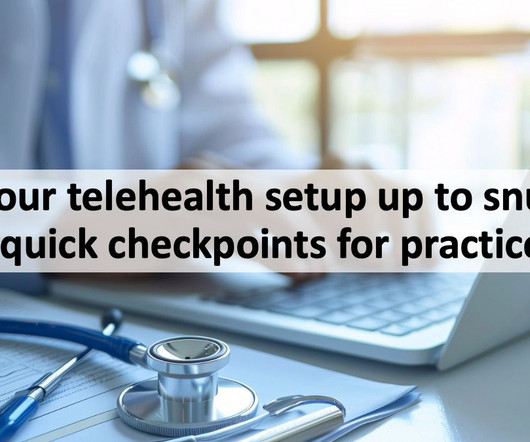Predicting Likelihood of Missed Appointments in Primary Care [Health care informatics]
Annals of Family Medicine
NOVEMBER 20, 2024
Despite efforts to improve patient-clinician relationships, access to care, and healthcare workflows, annual rates of missed appointments (MA) in the U.S Population Studied Adult patients scheduled for in-person or telehealth visits between 01/2019-06/2023. remain between 15-30%, costing $150 billion annually.
















Let's personalize your content